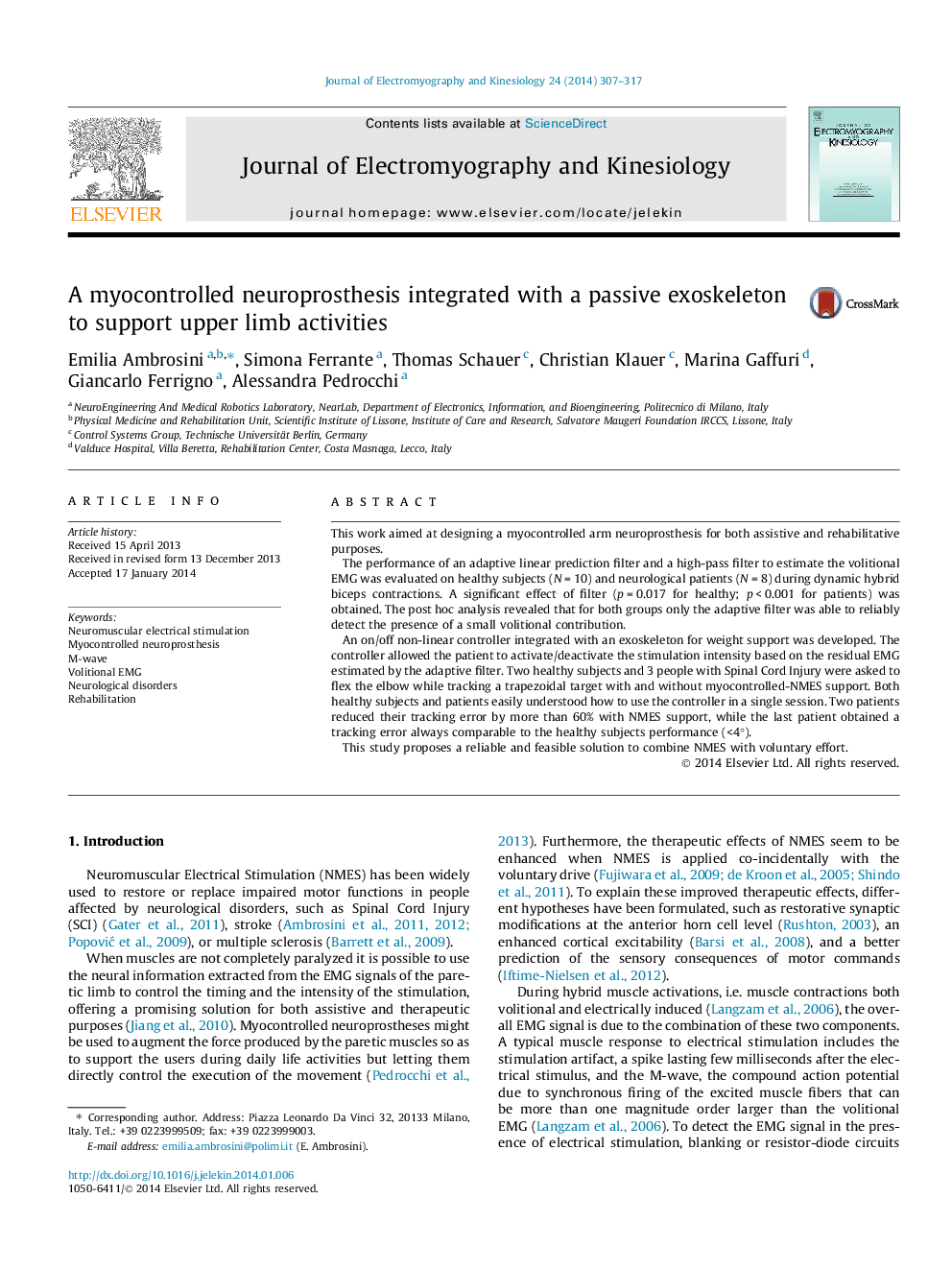| Article ID | Journal | Published Year | Pages | File Type |
|---|---|---|---|---|
| 4064670 | Journal of Electromyography and Kinesiology | 2014 | 11 Pages |
This work aimed at designing a myocontrolled arm neuroprosthesis for both assistive and rehabilitative purposes.The performance of an adaptive linear prediction filter and a high-pass filter to estimate the volitional EMG was evaluated on healthy subjects (N = 10) and neurological patients (N = 8) during dynamic hybrid biceps contractions. A significant effect of filter (p = 0.017 for healthy; p < 0.001 for patients) was obtained. The post hoc analysis revealed that for both groups only the adaptive filter was able to reliably detect the presence of a small volitional contribution.An on/off non-linear controller integrated with an exoskeleton for weight support was developed. The controller allowed the patient to activate/deactivate the stimulation intensity based on the residual EMG estimated by the adaptive filter. Two healthy subjects and 3 people with Spinal Cord Injury were asked to flex the elbow while tracking a trapezoidal target with and without myocontrolled-NMES support. Both healthy subjects and patients easily understood how to use the controller in a single session. Two patients reduced their tracking error by more than 60% with NMES support, while the last patient obtained a tracking error always comparable to the healthy subjects performance (<4°).This study proposes a reliable and feasible solution to combine NMES with voluntary effort.
